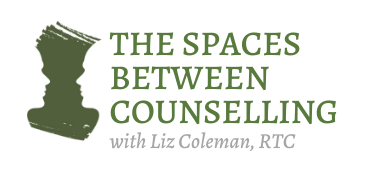1. A Simple Meditation
Count 30 breaths backwards. Meditation doesn’t have to be complicated. Focusing on your breathing is a mindful way to calm down. Counting backwards gives your mind a simple task to focus on, distracting you from spiraling thoughts. Meanwhile the extra oxygen adds to calming your anxiety.
After 10 breaths, you will start to notice where you’re tense or holding your body and can then consciously relax that part of your body. As you go, you’ll notice even subtler tension and relaxation.
By the 15th breath, you will notice your breathing getting slower, deeper, and stretched out, allowing more oxygen into your body.
When you are down to 10 breaths, the counting may fall away but the rhythm of the breath will feel comfortable and easy.
For parents: Create a breathing exercise with your children. This isn’t a practice for one but is to be shared. Breathing can be contagious like yawning.
For social or performance anxiety: This is an excellent centering tool to use before a particularly difficult situation, like a party, speech, or big event. With one difference, it may take more to calm your nerves so start with counting 50 breaths backwards.
BONUS
For a better Sleep: As you are going to sleep or if you find yourself awake in the middle of the night, this breathing exercise will help distract your racing thoughts to help you fall asleep.
2. Writing to Calm Anxiety and the Critical Mind
 Another tool to calm anxiety is Freewriting or Continuous Writing. This has been used to get over fears and obstacles to creative expression for novelists and other artists. It has also become a beneficial tool to calm the mental spiral of thoughts that go along with anxiety.
Another tool to calm anxiety is Freewriting or Continuous Writing. This has been used to get over fears and obstacles to creative expression for novelists and other artists. It has also become a beneficial tool to calm the mental spiral of thoughts that go along with anxiety.
The directions are simply to write freely – without regard to grammar, punctuation, or sentence structure. Without lifting the pen, write continuously, dumping all of your thoughts, as they come onto the paper.
The idea is that continuous writing allows your conscious, critical mind to relax and gives your subconscious permission to express what is usually hidden. What you write is “For Your Eyes Only” to let you set aside any self-consciousness judgements or criticism about the words.
As you are writing, you may find the thoughts stop. No problem, keep writing, “I don’t know what to write” until the thoughts invariably start again.
Continuous writing can often reveal buried feelings, thoughts, and past incidents. So if you start to get emotional, let them come up and allow yourself to feel. Then write those feelings down as well. Freewriting is a tool to help you work through painful, traumatic, past events as you write and allow the emotions to move through you.
Decide whether you would prefer to write in the morning or the evening. If you are often woken up by anxious thoughts in the night, then try writing before going to sleep to best empty your mind of any intrusive thoughts or ideas. You may find you get a better night’s sleep.
Attempt to write every day to see the real benefit. It is less important what or how much you write than that you write. Give it a try for at least five days to get an idea if it will benefit you or not.
Because no one will ever read these pages be as honest as possible.
If there’s a chance someone could read them, then burn, shred or delete them right away. The key is to feel as free as possible to write out your thoughts and feelings. If you are afraid of someone reading them, you’ll be tempted to edit, and that would defeat the purpose.
Liz Coleman, RTC, is a Registered Therapeutic Counsellor based in Surrey, BC. She specializes in anxiety, anger, insecurity, and relationship problems. If you have any questions about this article or would like to schedule an appointment, please call Ms. Coleman at (604) 809-8947 or use the convenient form on her Contact page.

